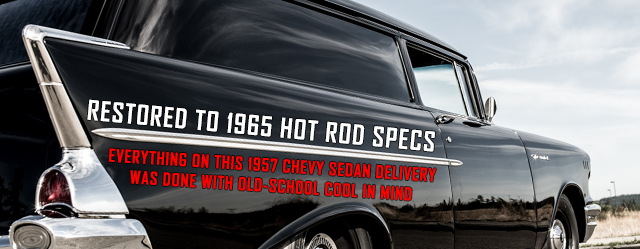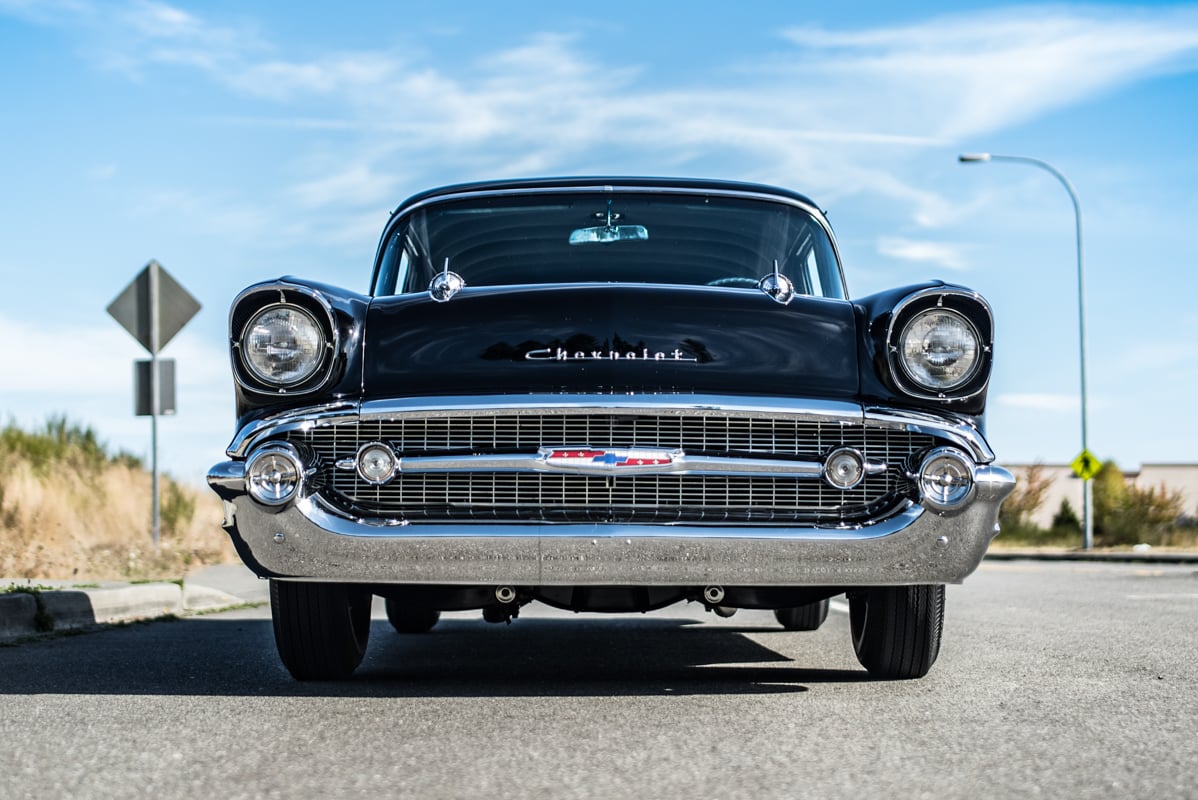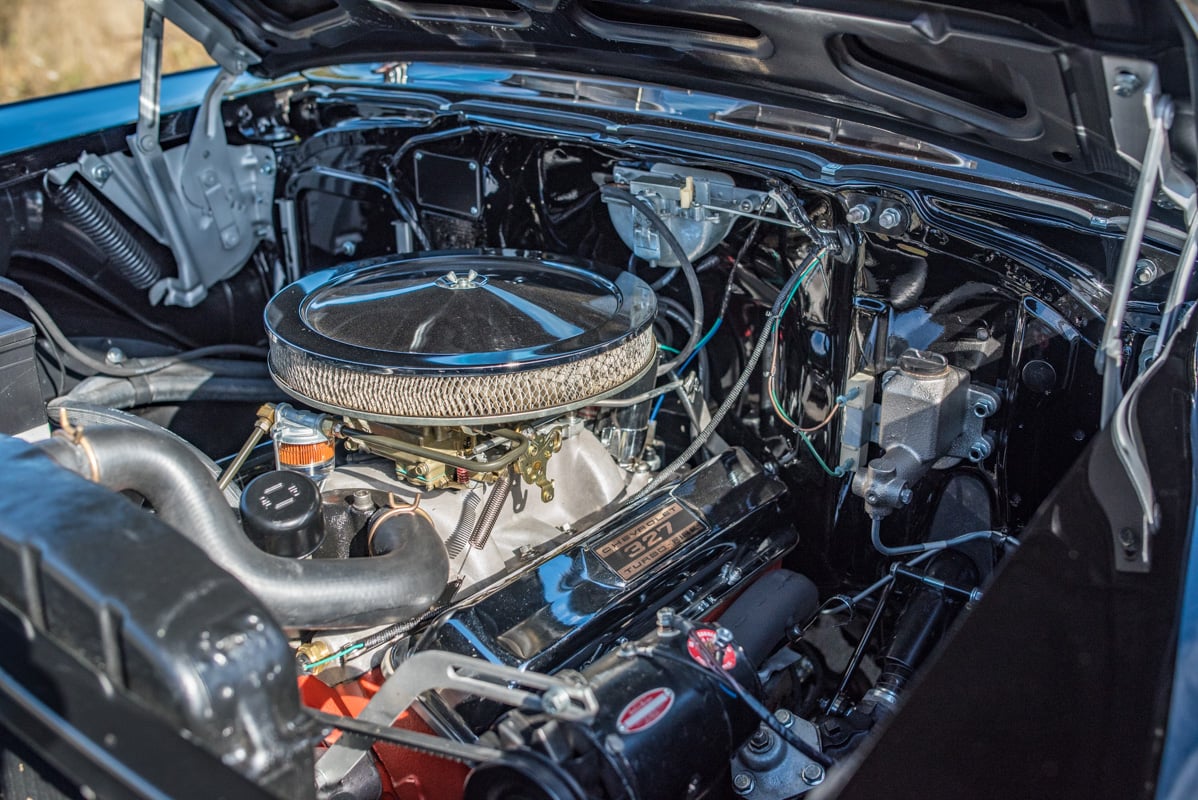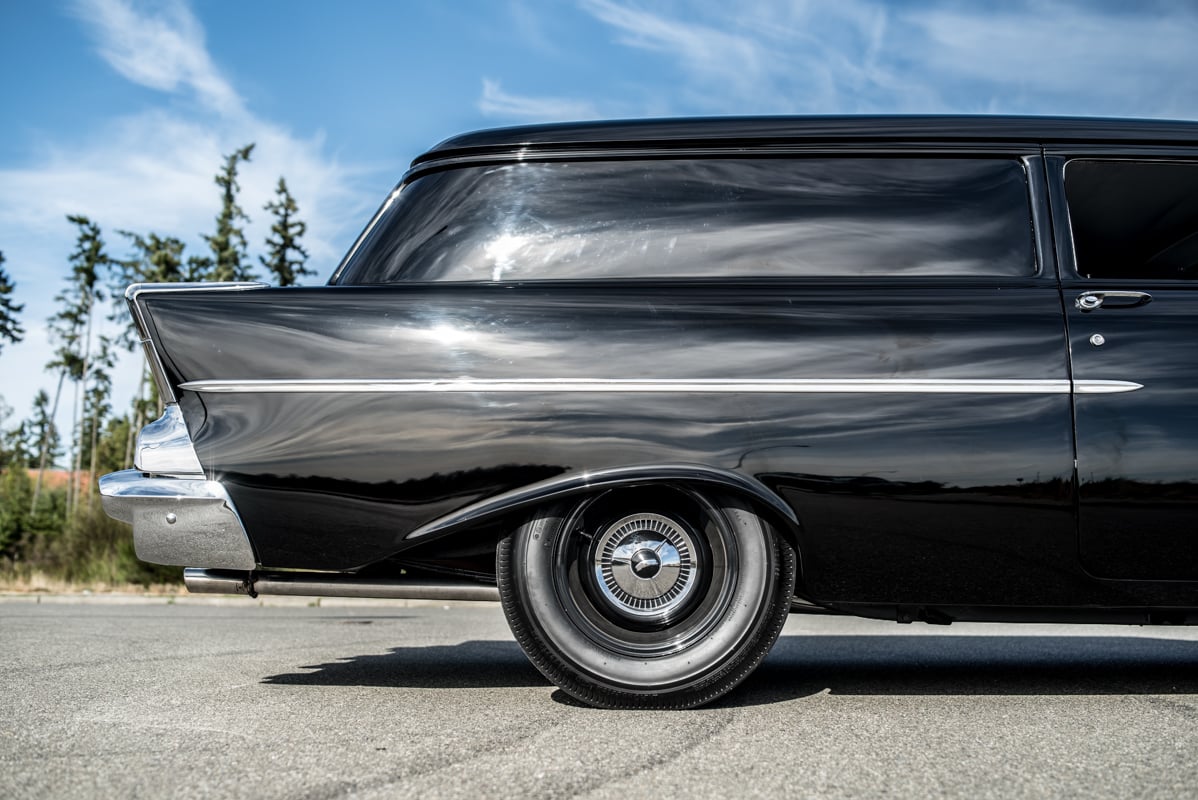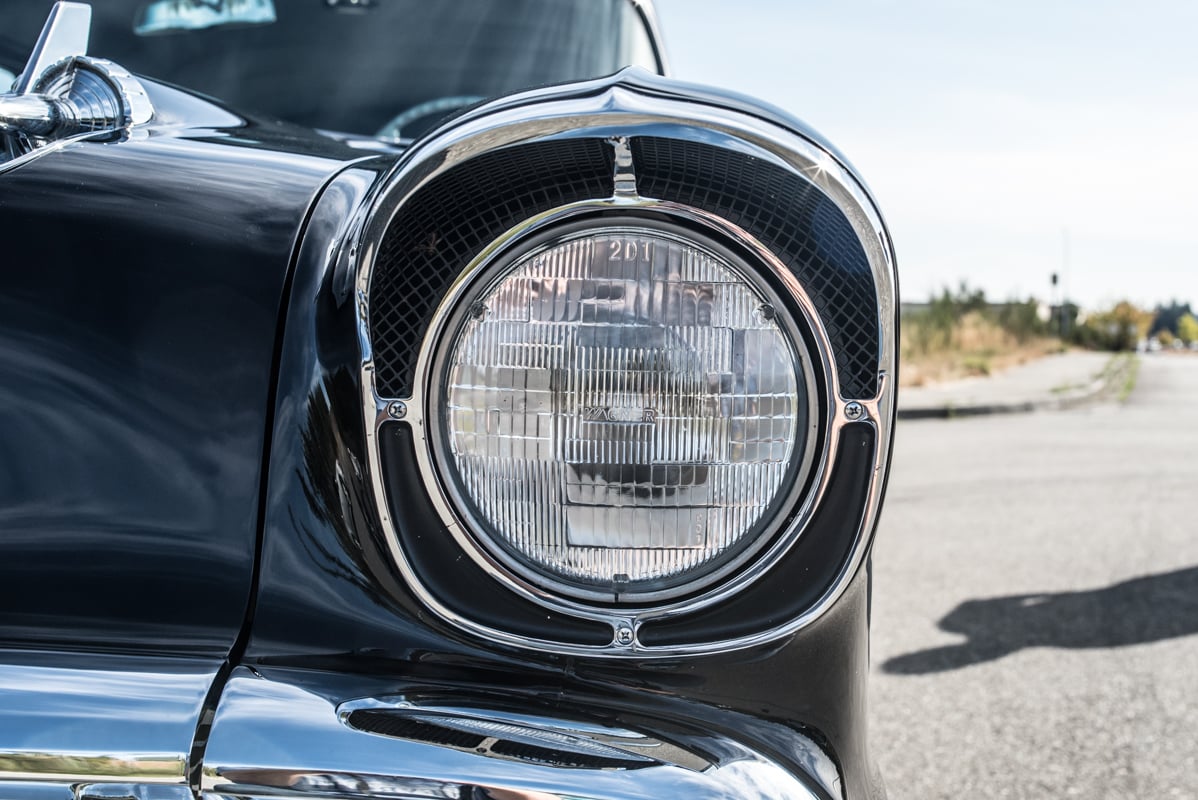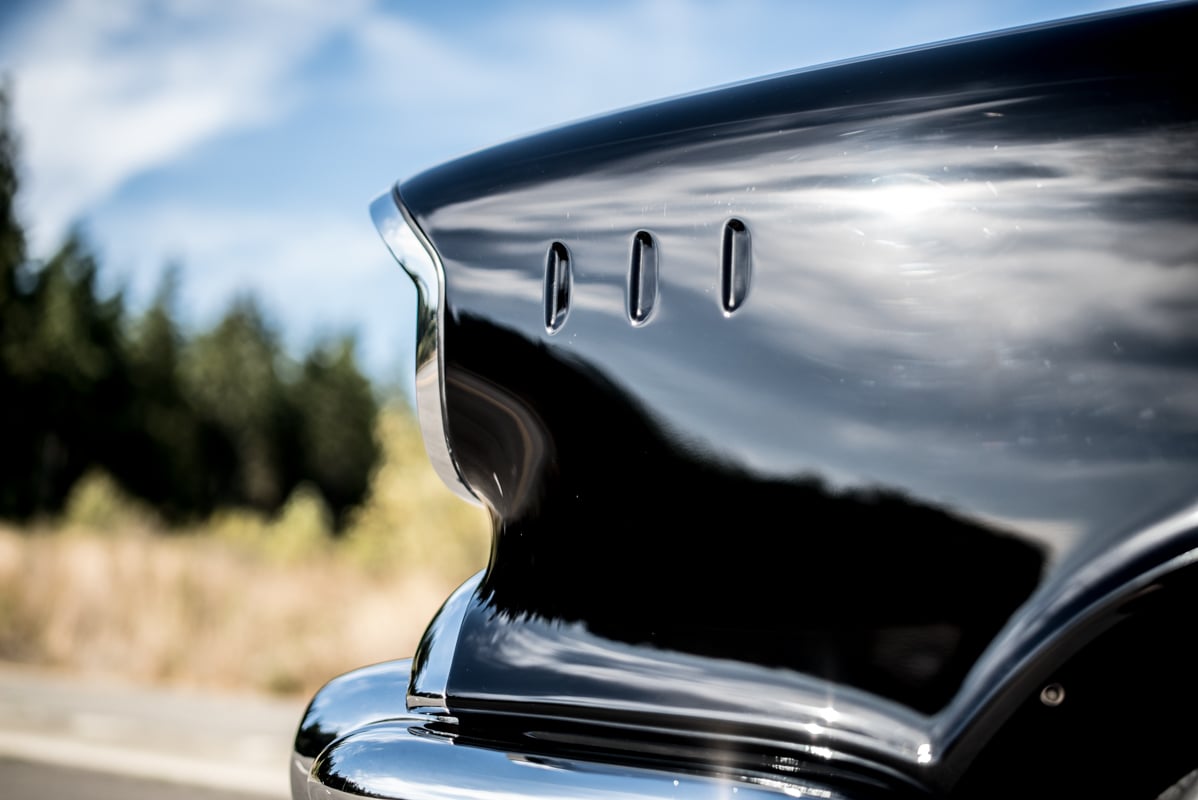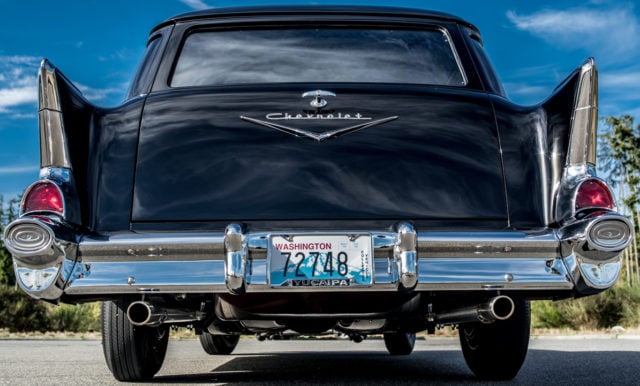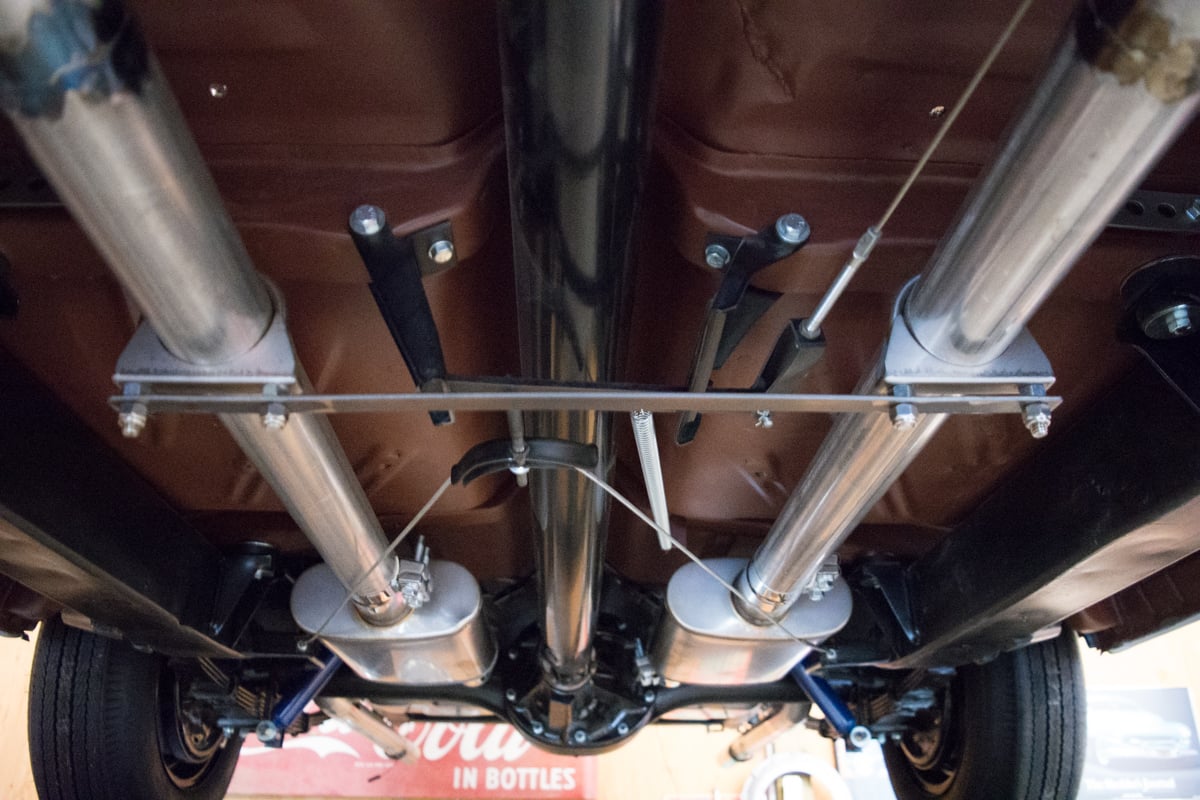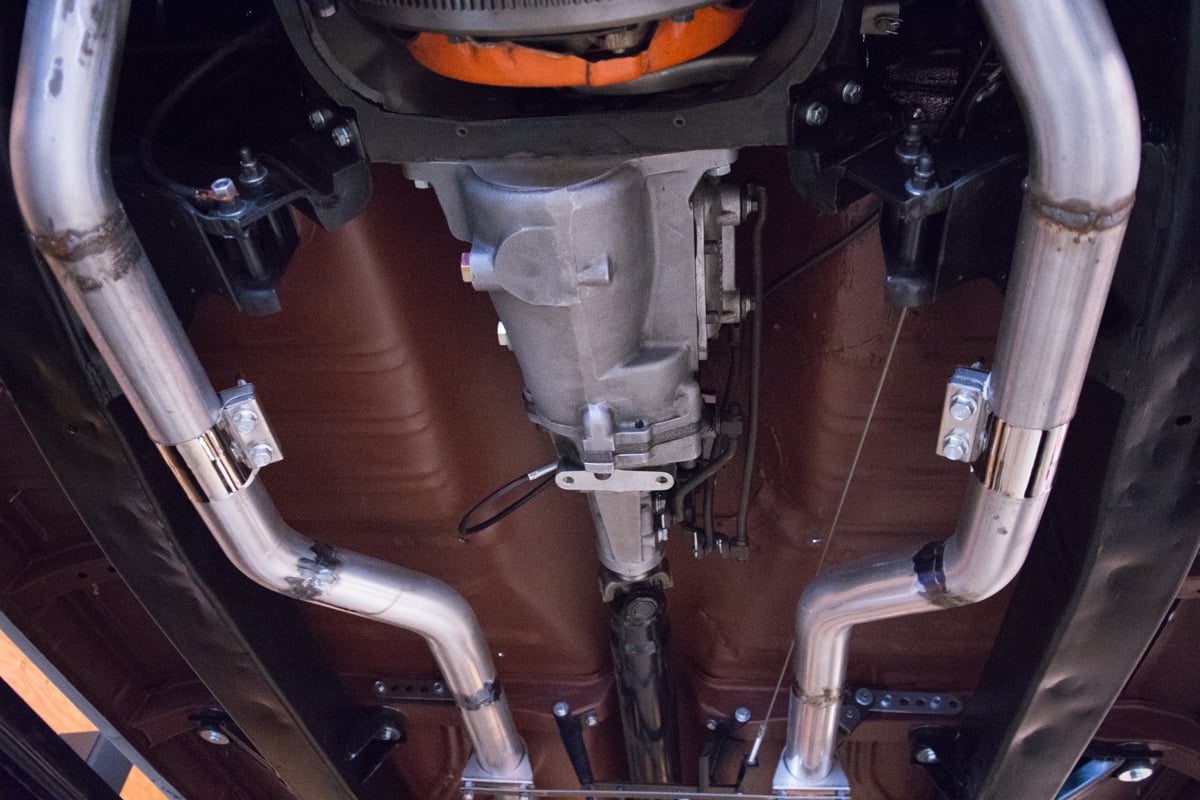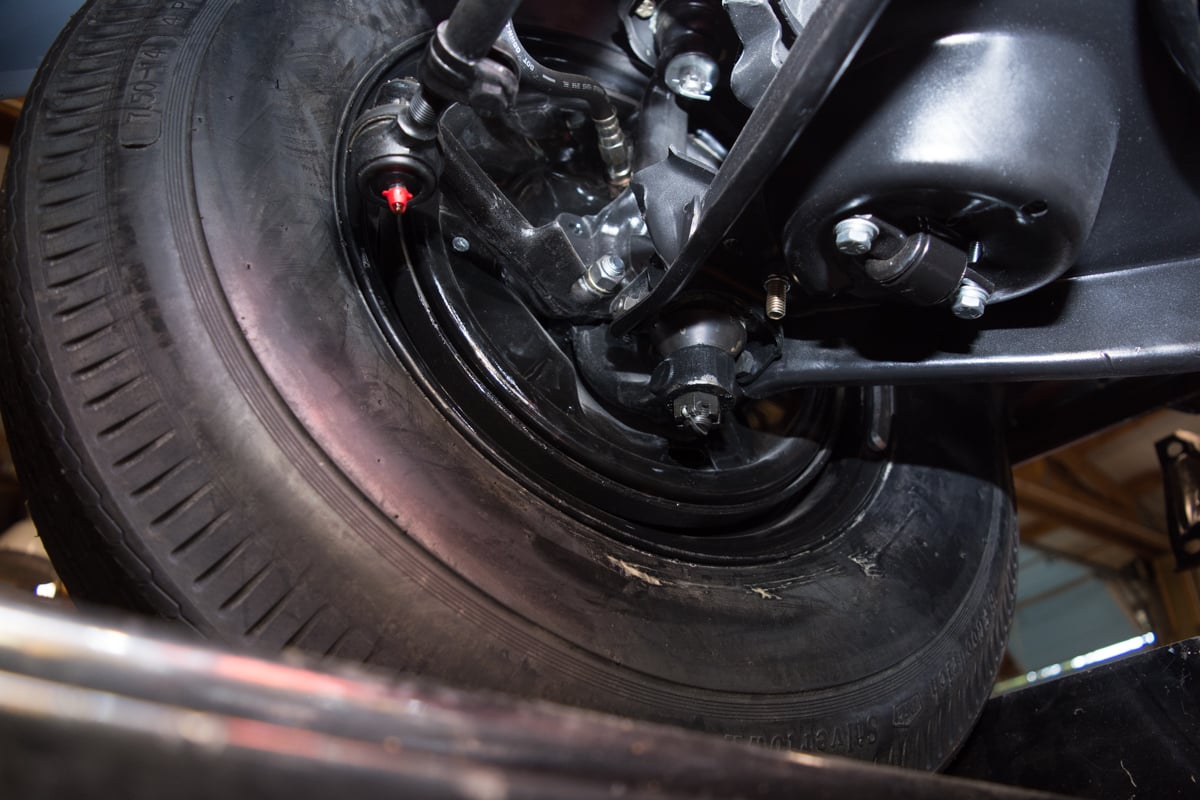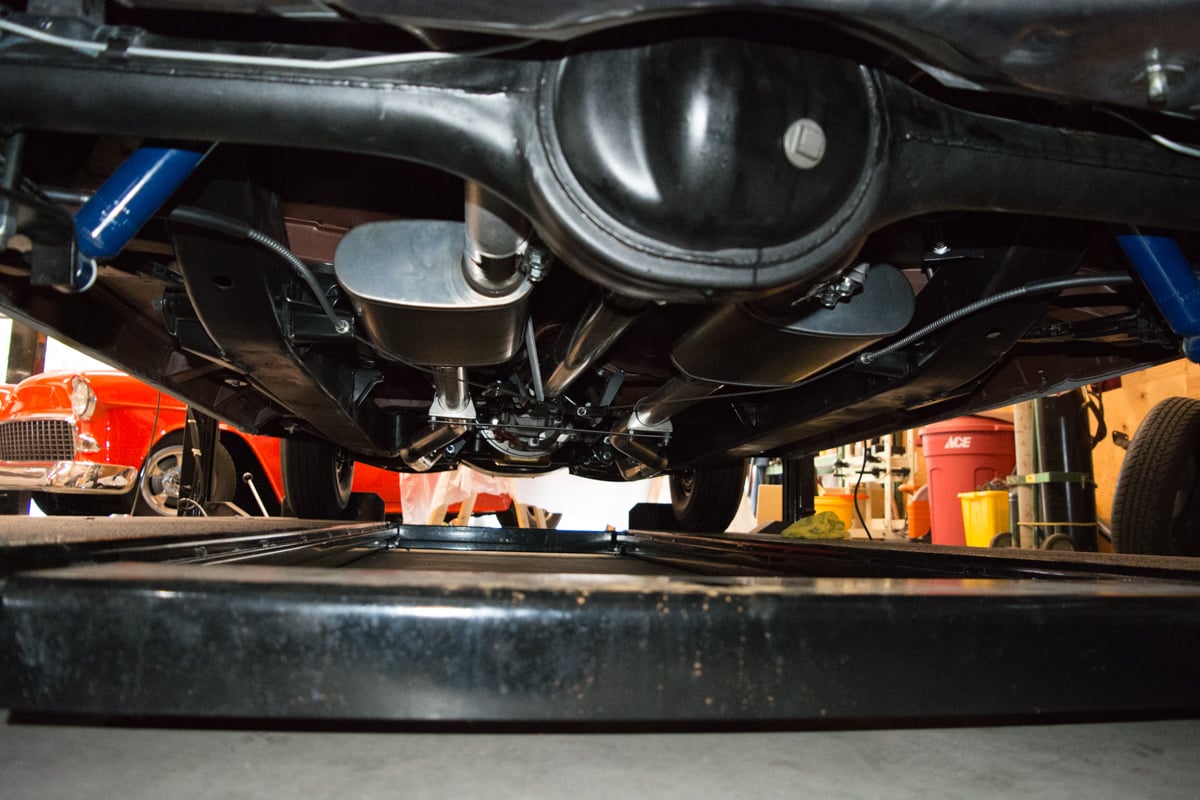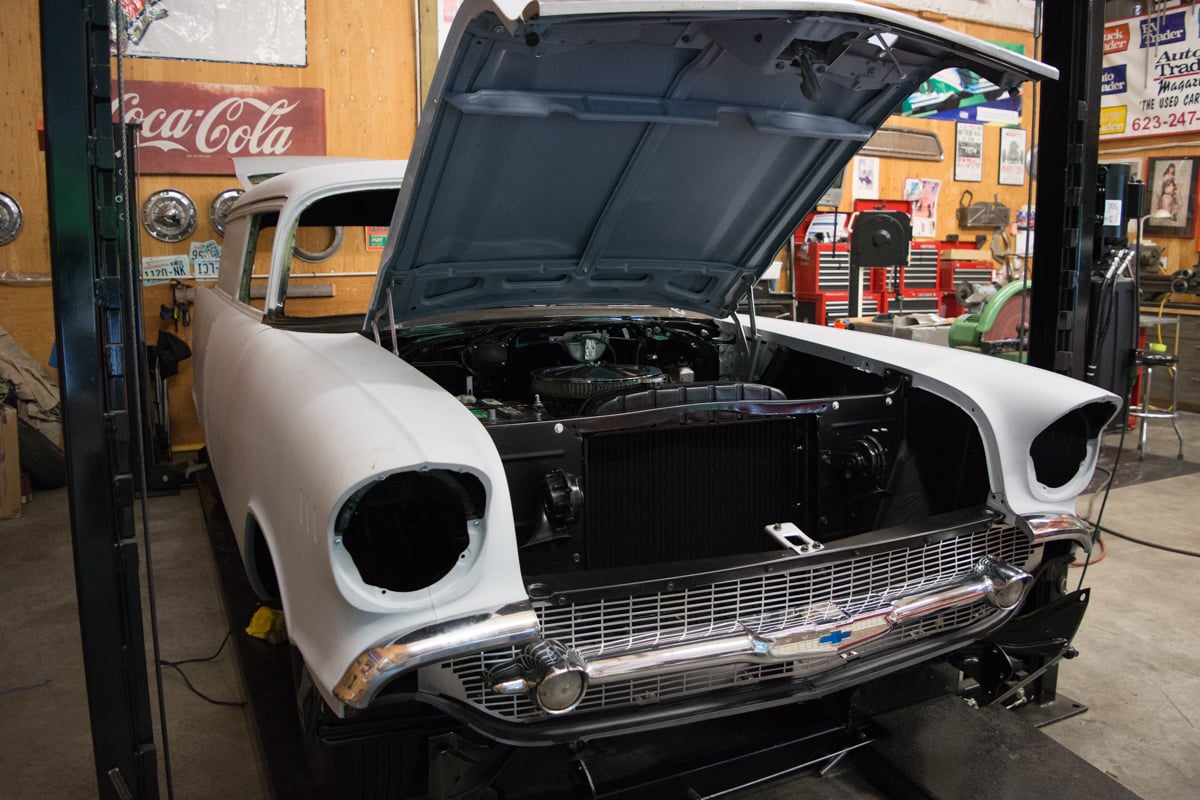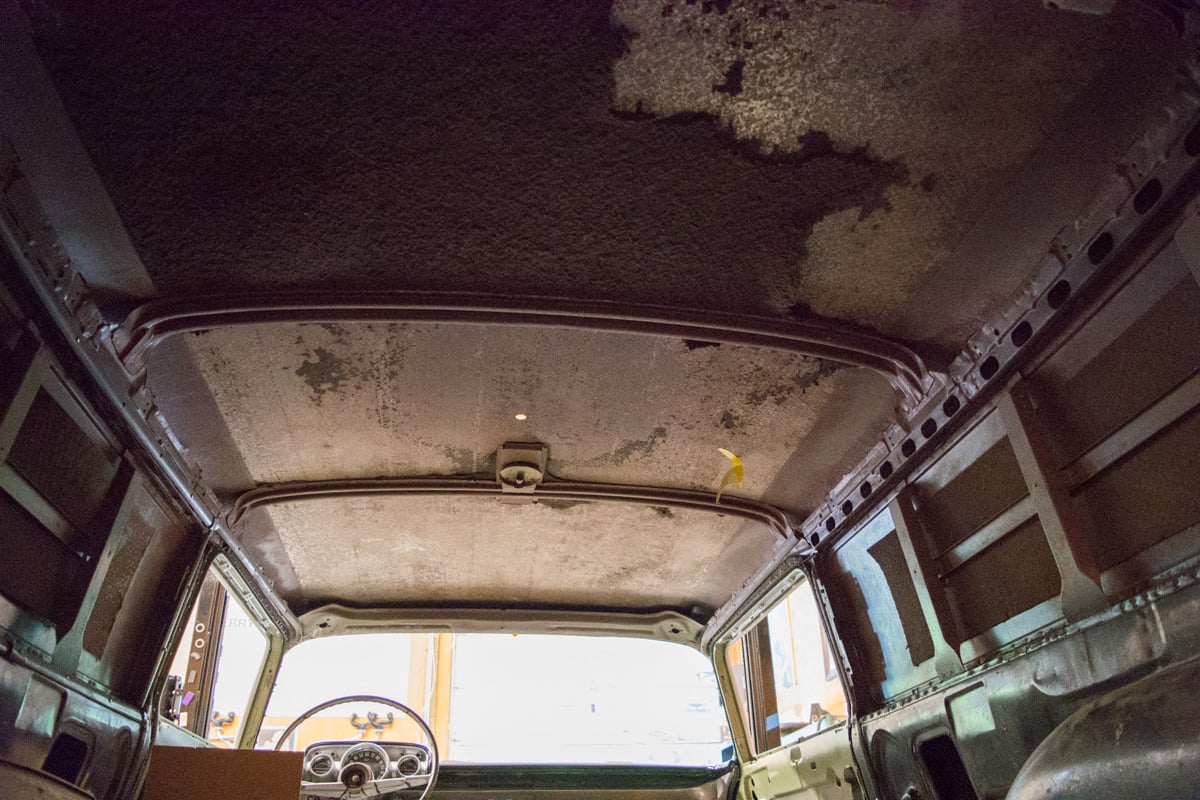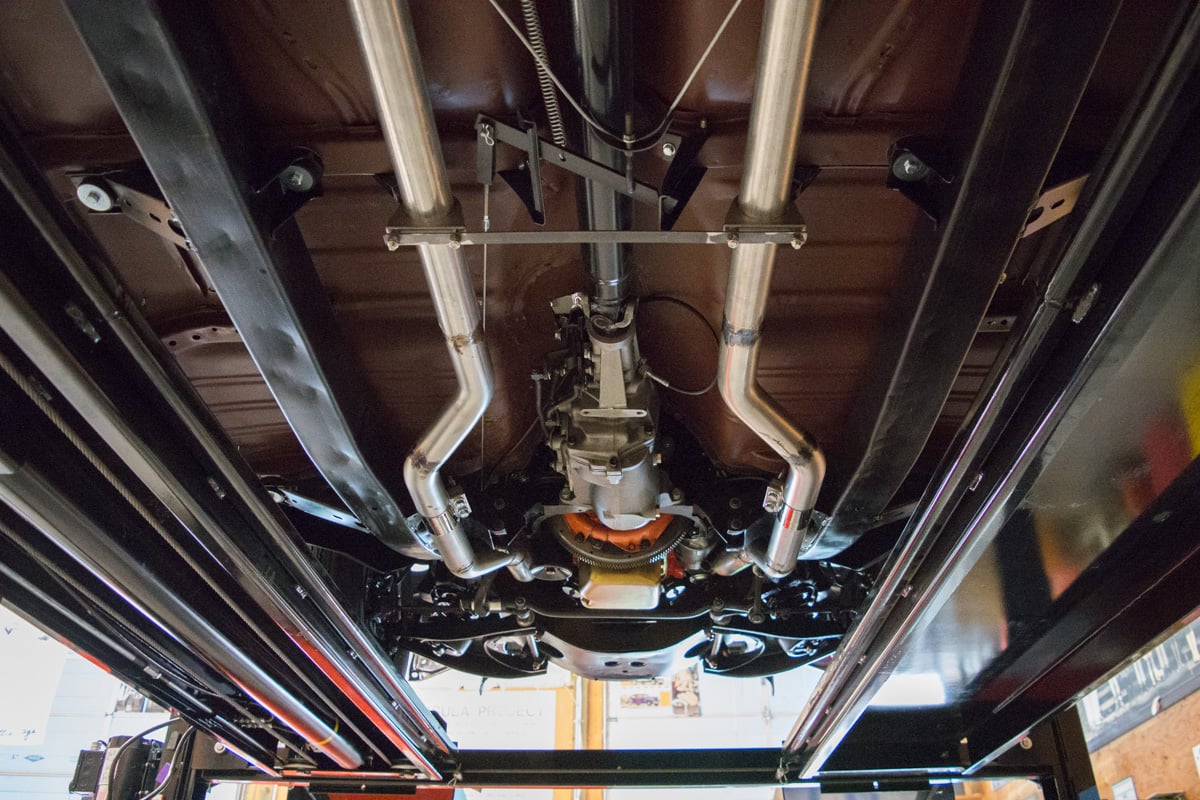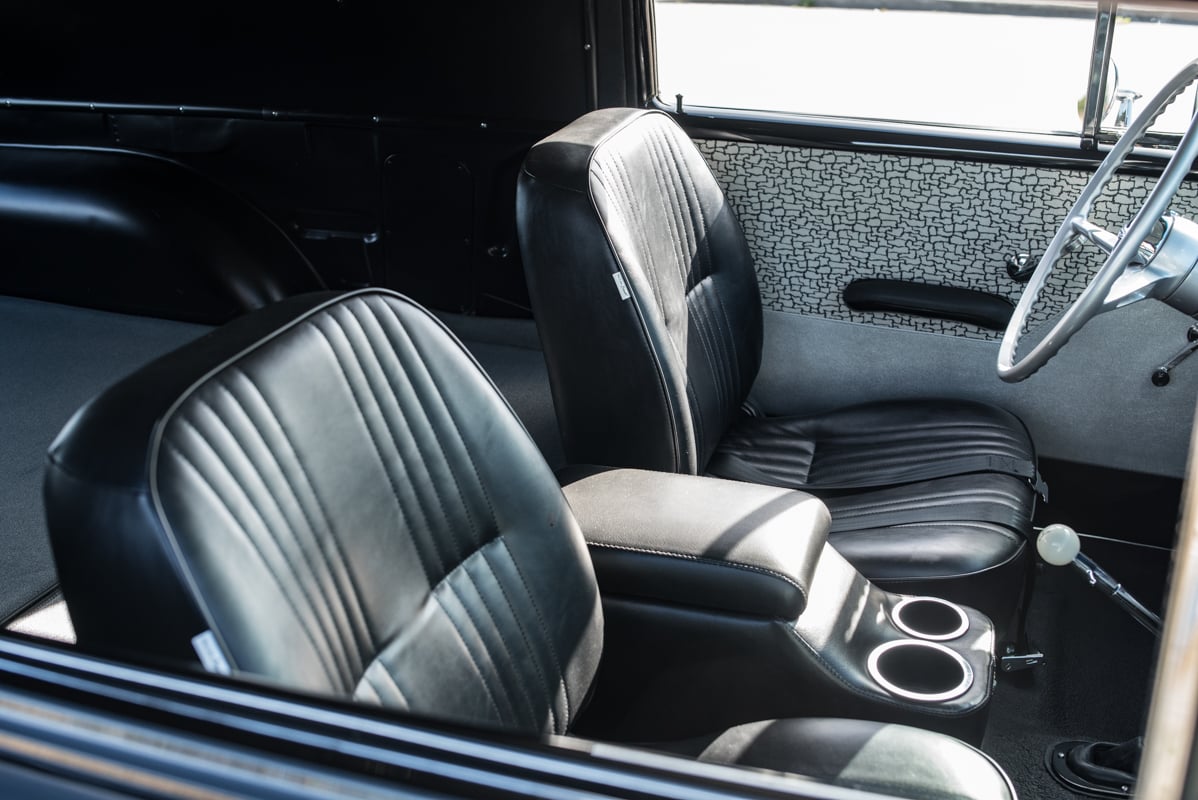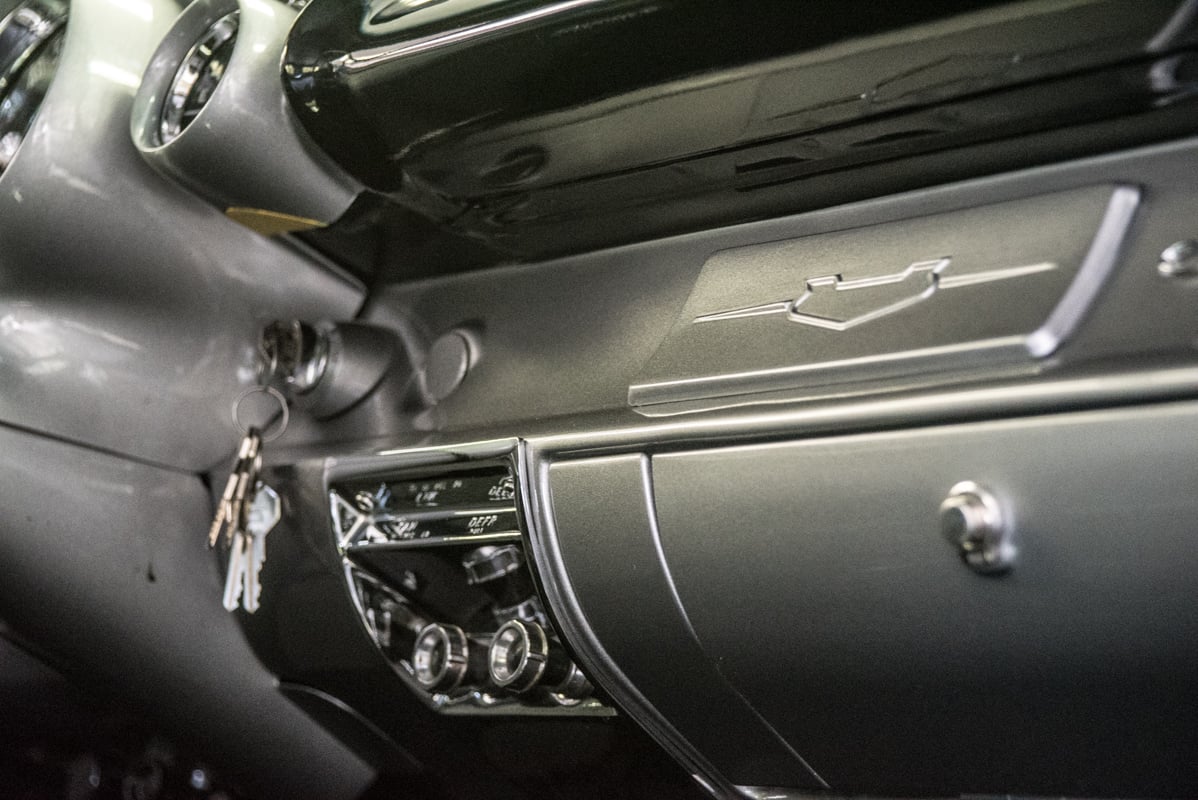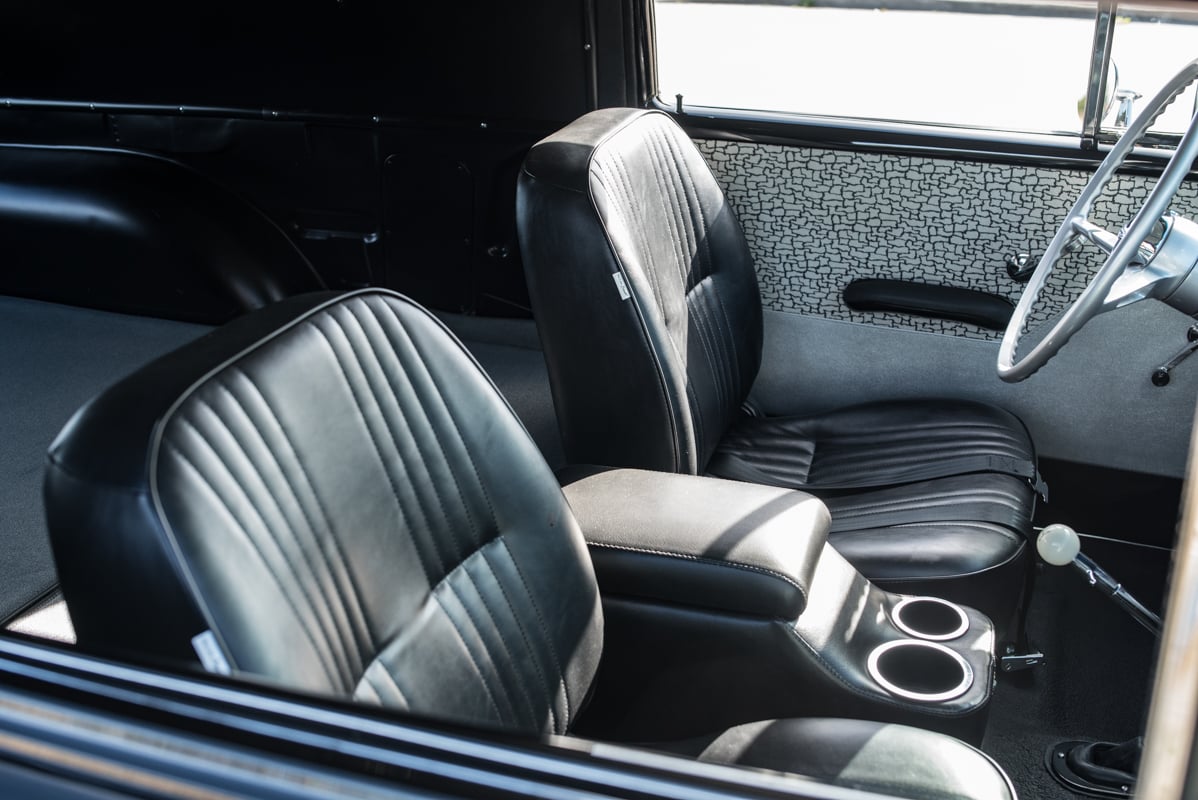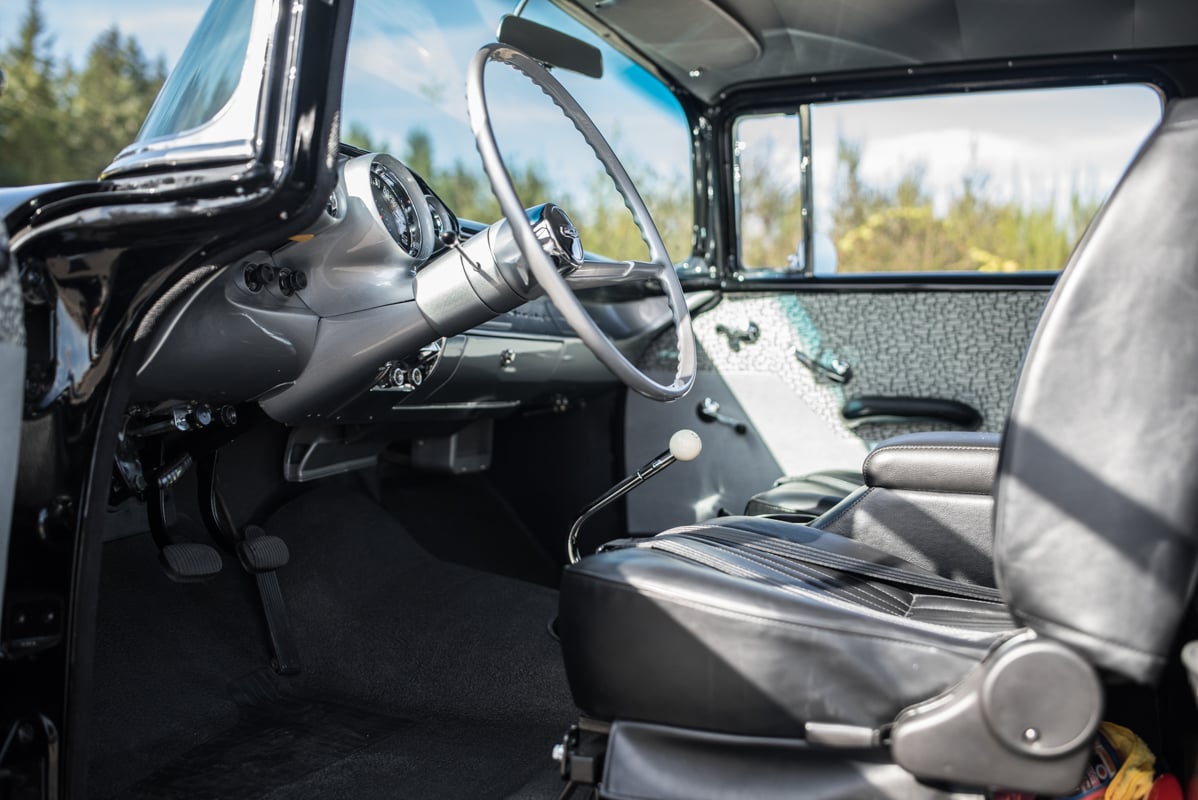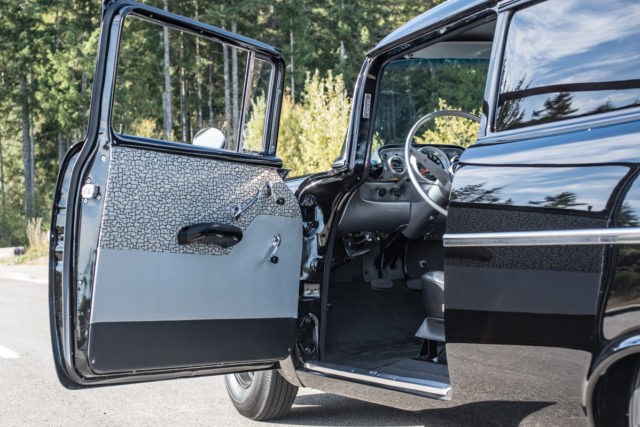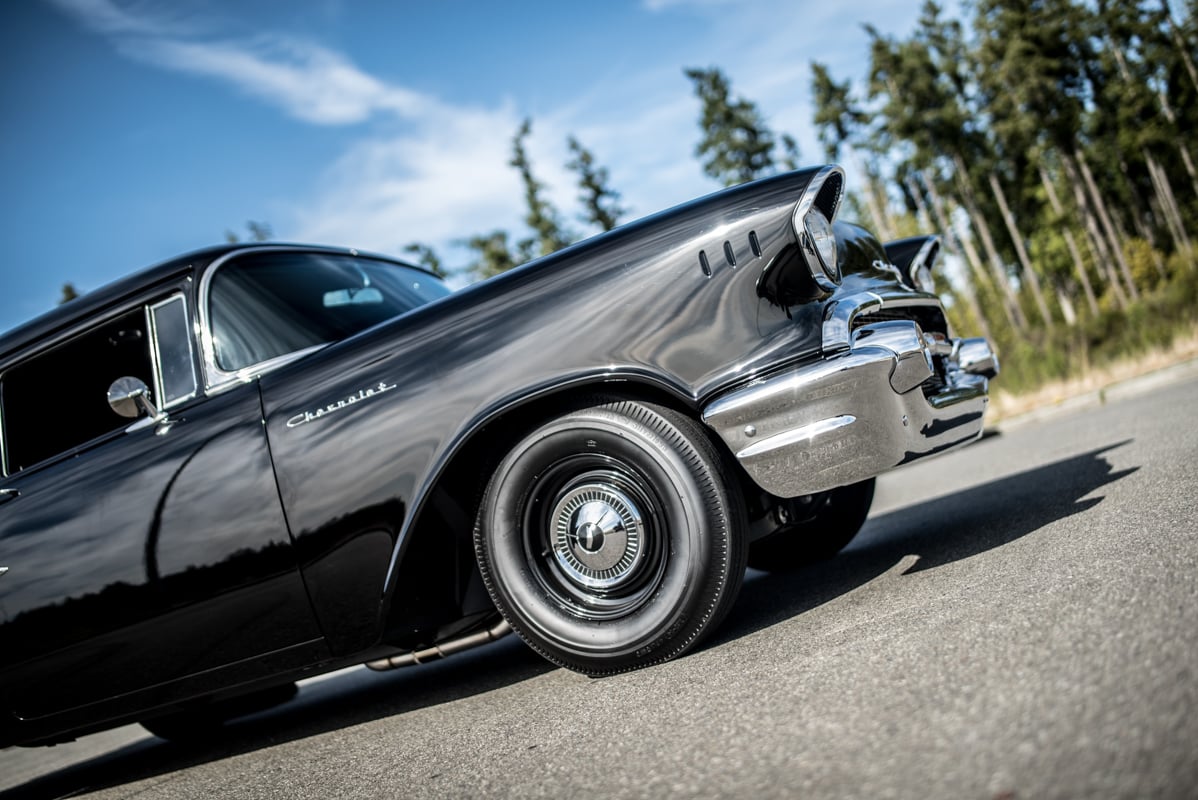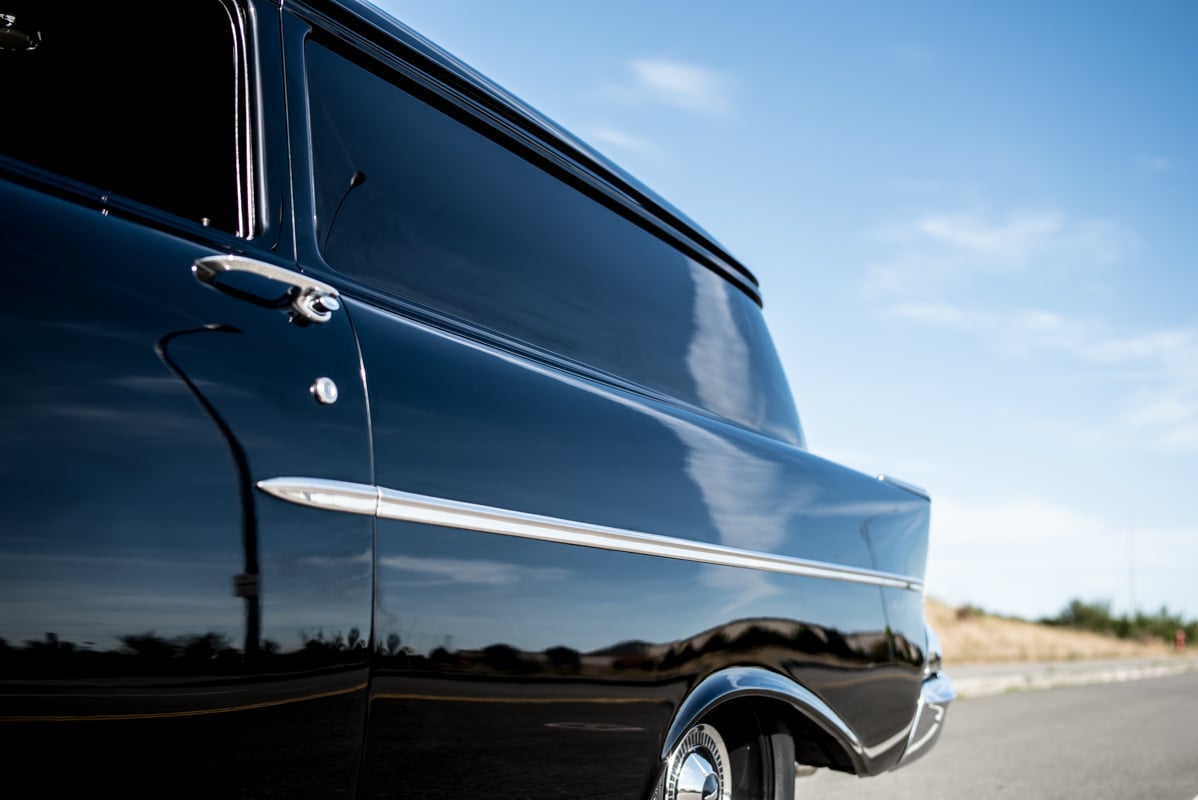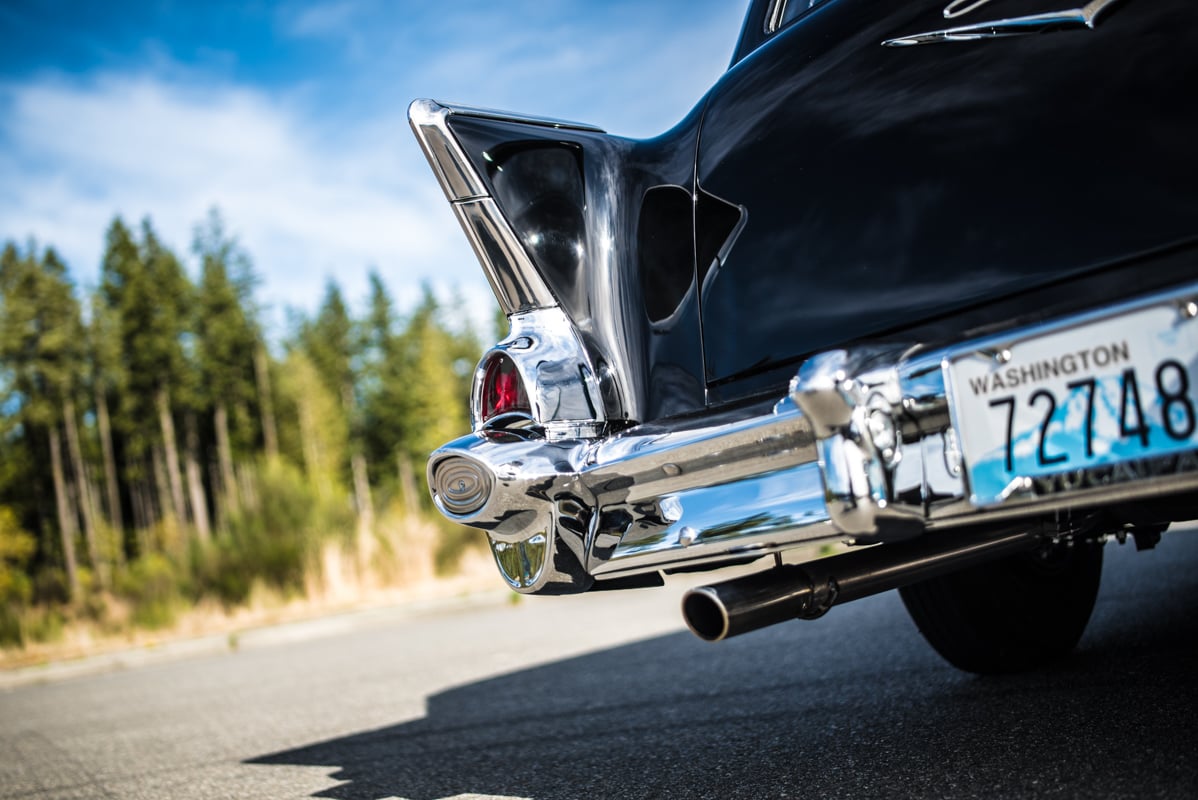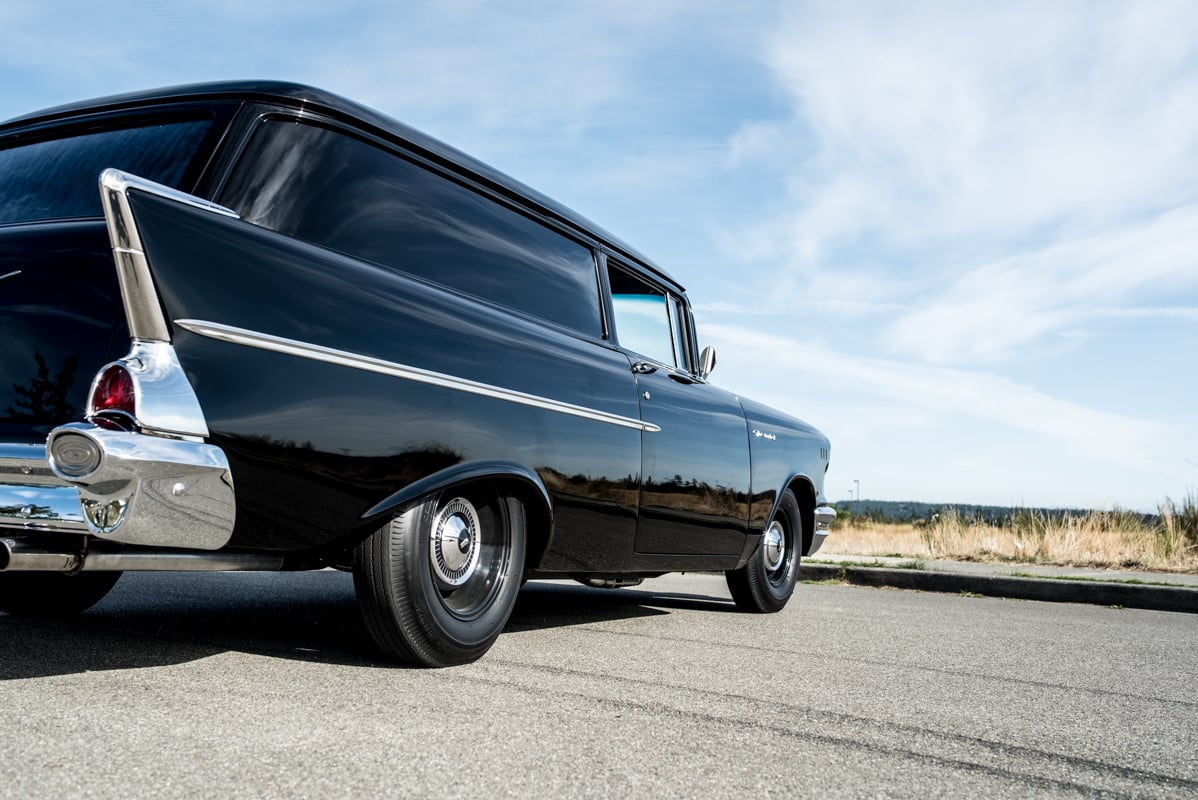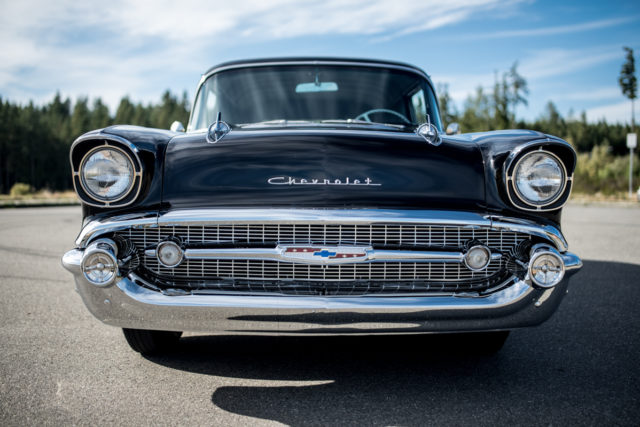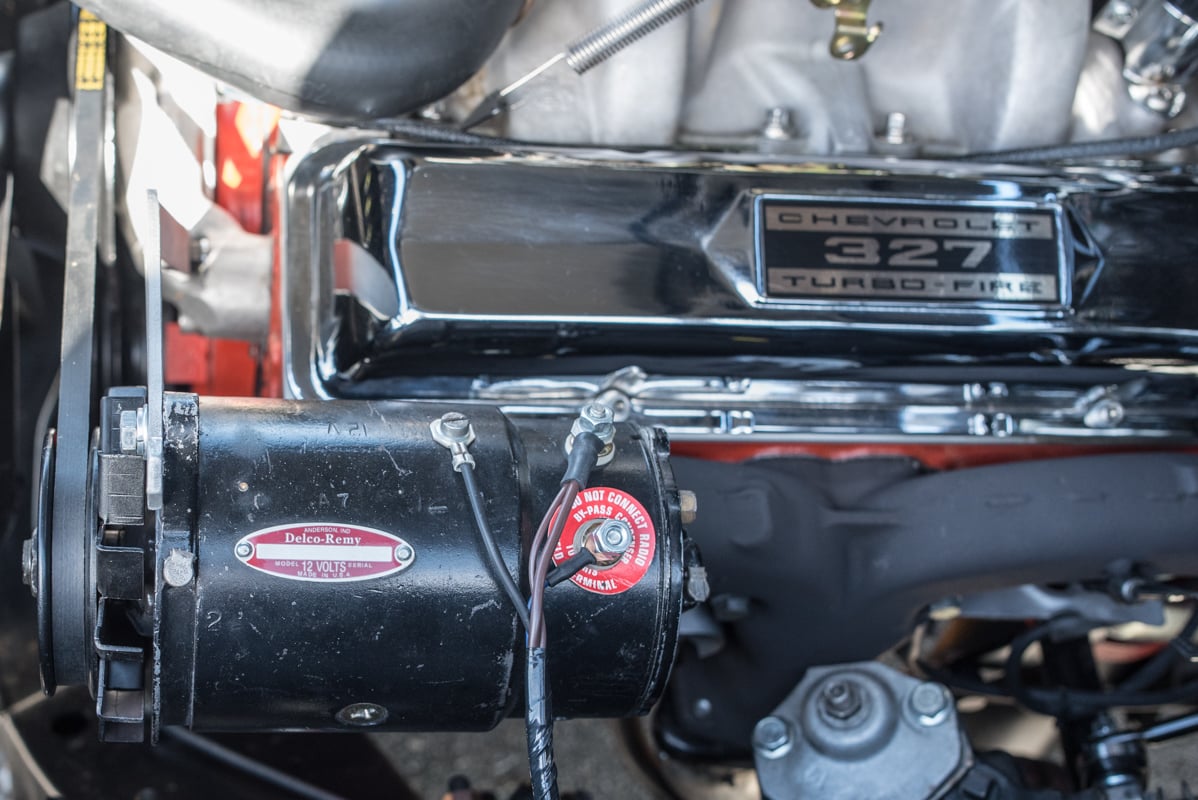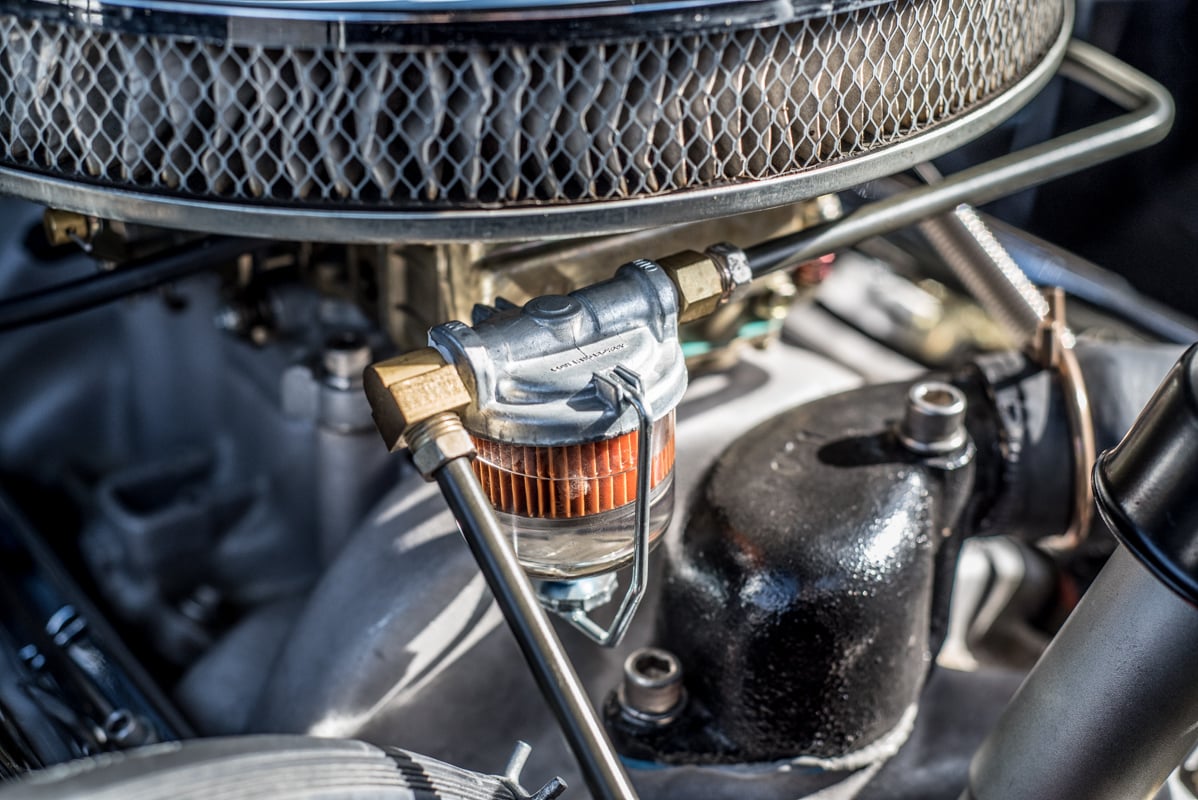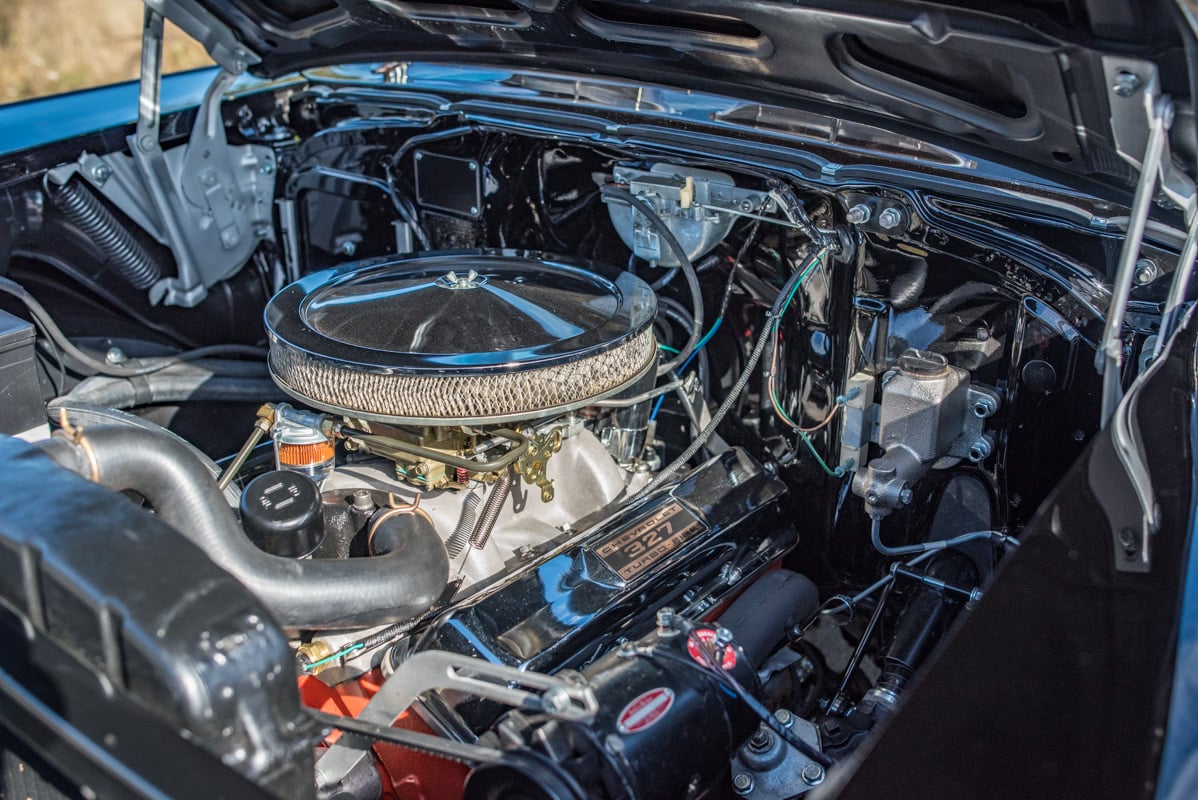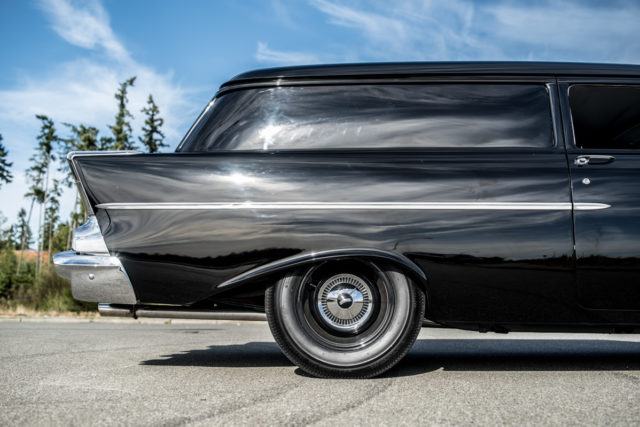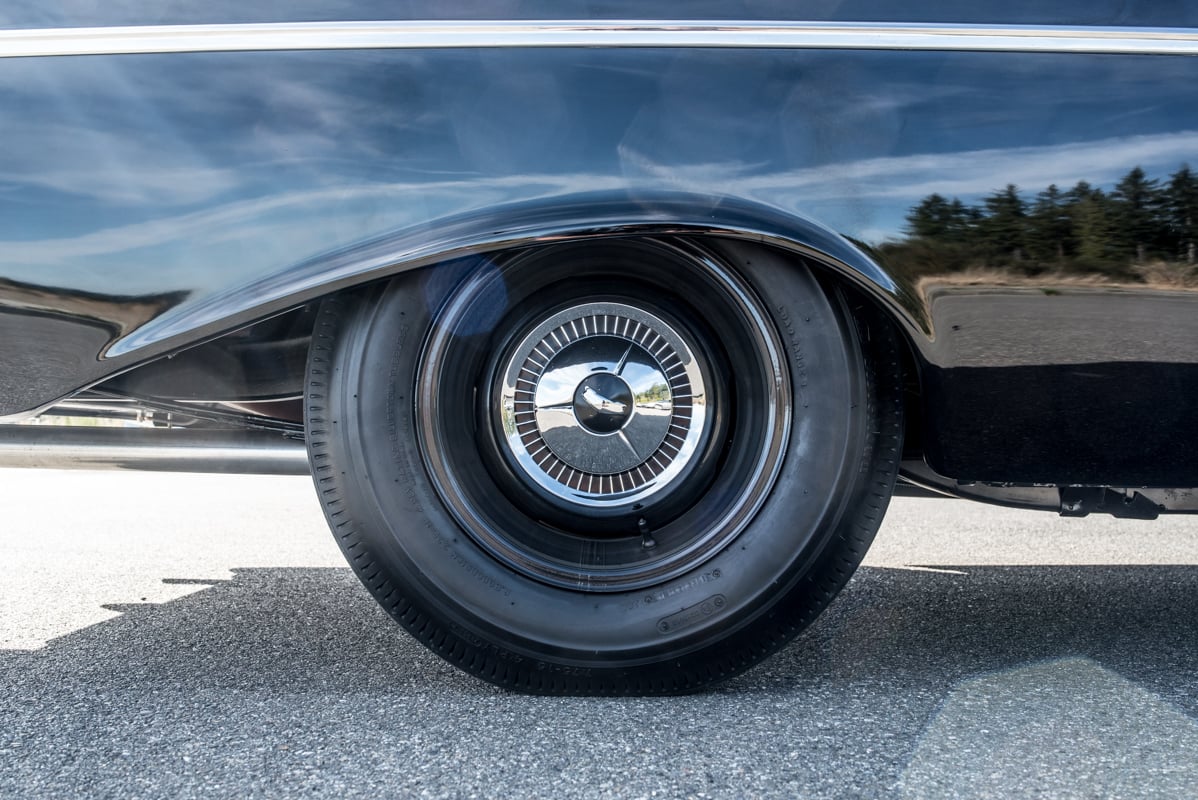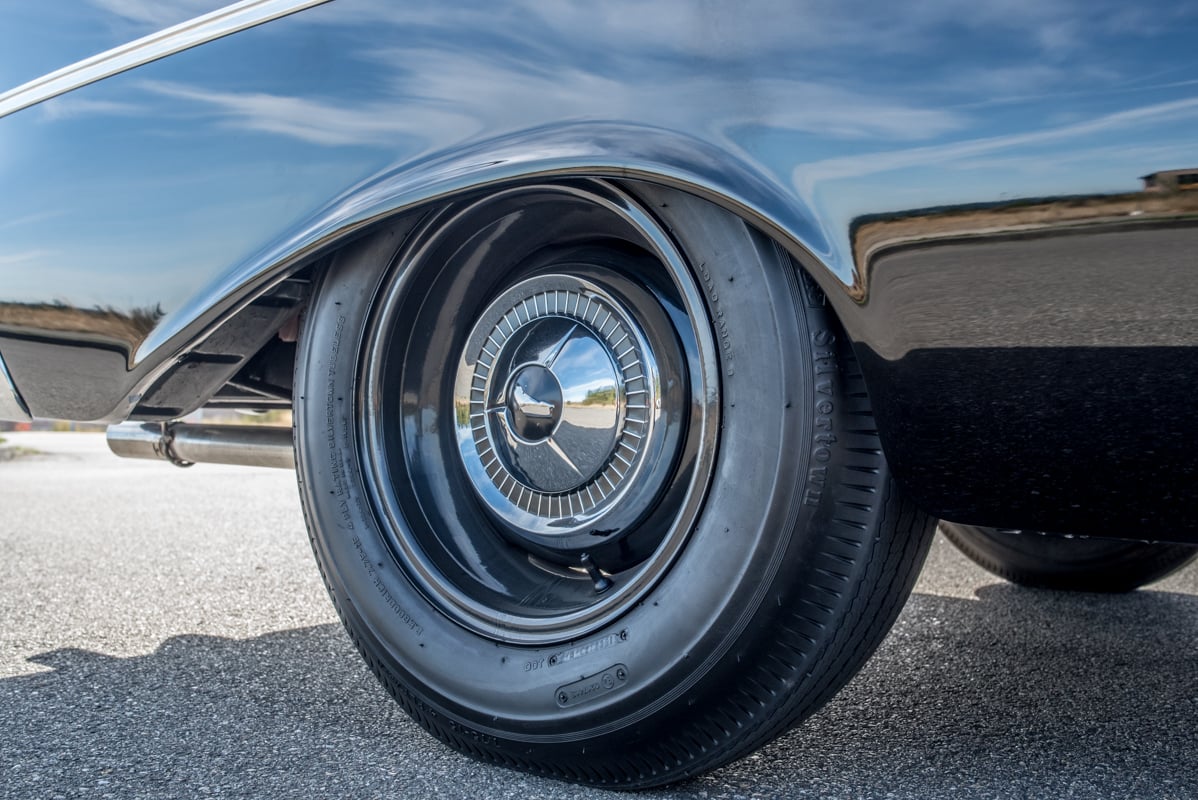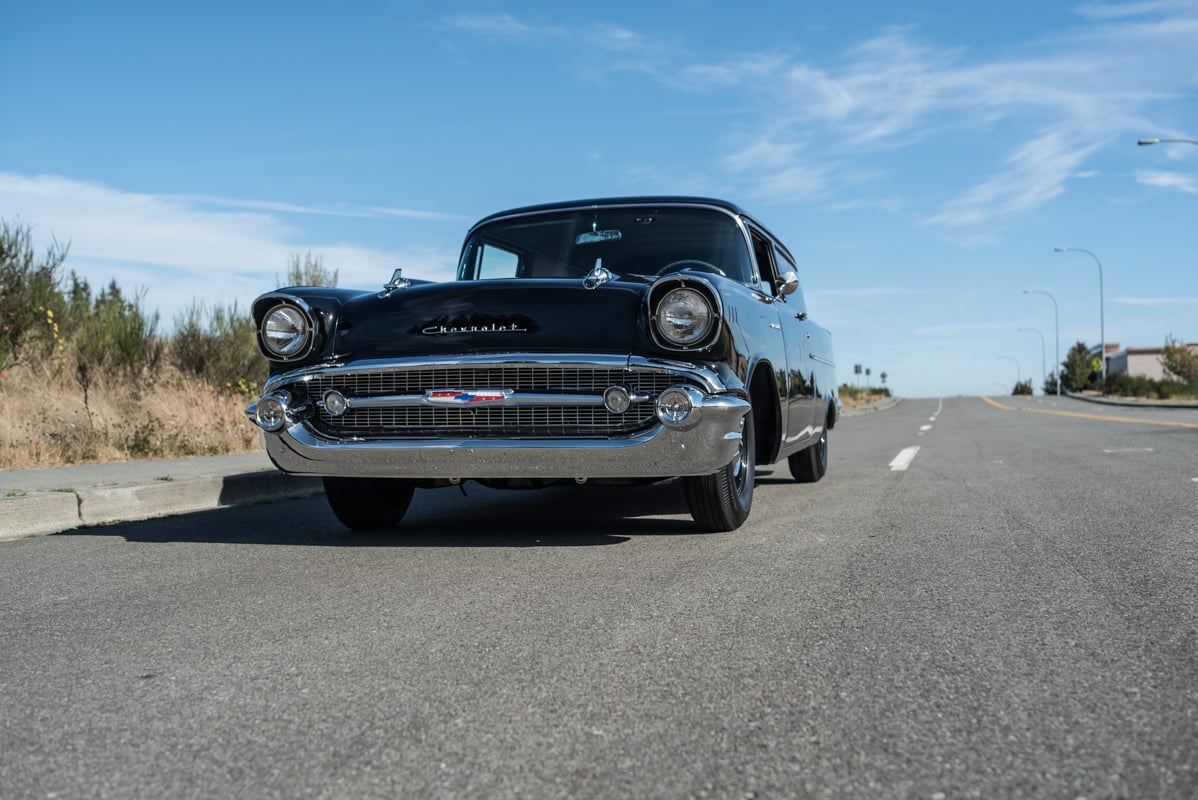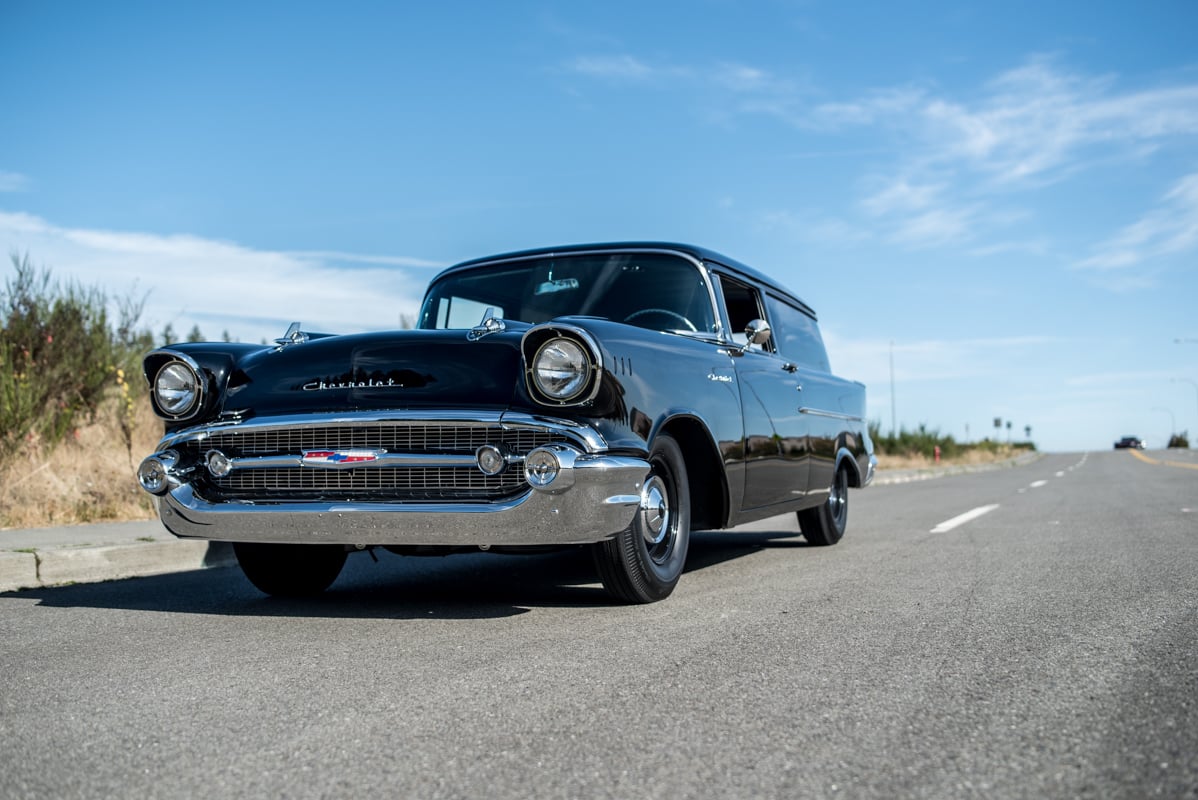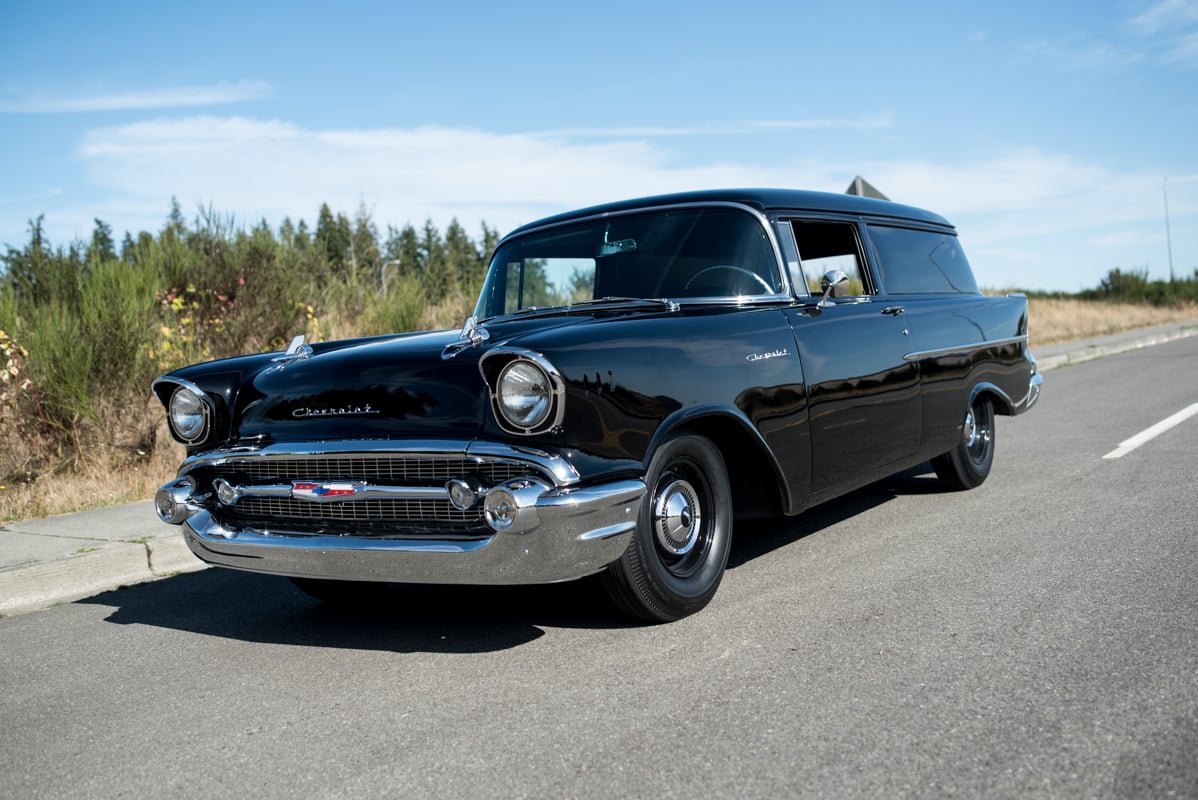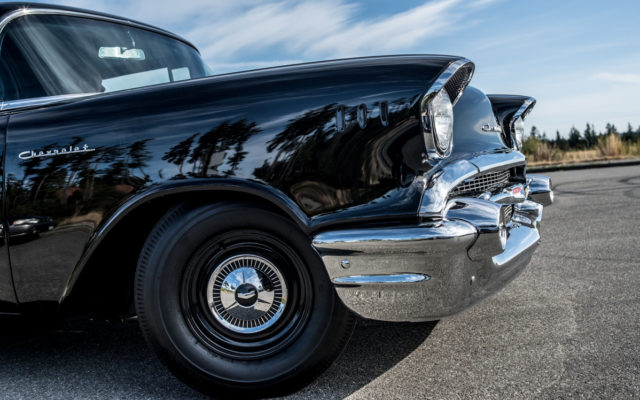The 1960s were a special time in hot-rdodding history. The cars were new, rust wasn’t prevalent, and you could pick up a good, clean project for next to nothing—even adjusted for inflation. The ’60s also represent a time that came before you could buy direct-fit parts for a car and make it into anything you want.
The clean, refined nature of this classic build really hits the spot. It's not overdone and the pre-1965 only theme ads a refreshing aspect to this car.
If you wanted something custom, you had to figure out how to do it yourself. You had to go to the wrecking yards and scrounge for parts. You had to figure out what would fit and what wouldn’t. No two cars were the same, and the ideas were all still fresh.
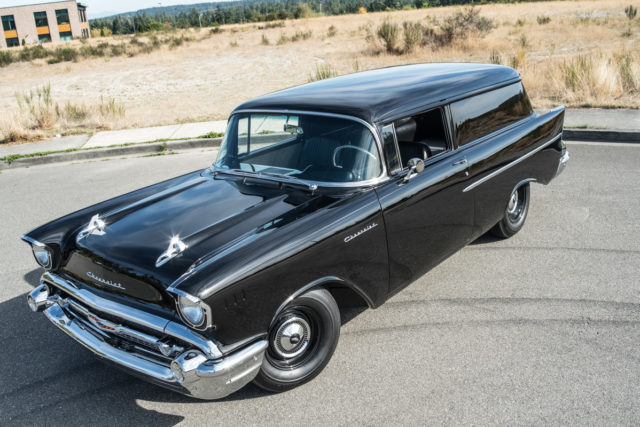 [5]
[5]This car offers an interesting contrast to other Tri-Five models, where the sedan delivery has very little chrome. The single piece of belt molding that starts at the back and extends just barely into the door offers a clean, minimalist approach to a car usually dripping with chrome and stainless trim.
I wanted it to look like it was in my high school parking lot in 1965 – Joe Clotfelter
“The car does not have disc-brakes, and there’s no power steering. That’s because we didn’t do any of that stuff in the early ’60s,” he continued. “If you were a Chevy guy in the ’60s, your dream engine was a 327, not an LS.” Joe designed and built his 1957 sedan delivery to 1965 hot-rodding specs, and we think he did an excellent job.
The detail that Joe put into this build is spectacular, and the all black paint really makes the iconic 1957 Chevy body pop.
A Good Start
Joe knew what he wanted to build, and to accomplish that, he was looking for a two-door wagon. “I was at the Goodguys [9] show in Spokane, and I saw this car for sale,” Joe said. “Typical though, he wanted a lot of money for it.” Joe liked the car, but passed at the time, not knowing that he would see it again before too long. “I later saw it on craigslist,” he continued. “I kept watching the price go down, and when I was comfortable, I called him and said, let’s make a deal.”
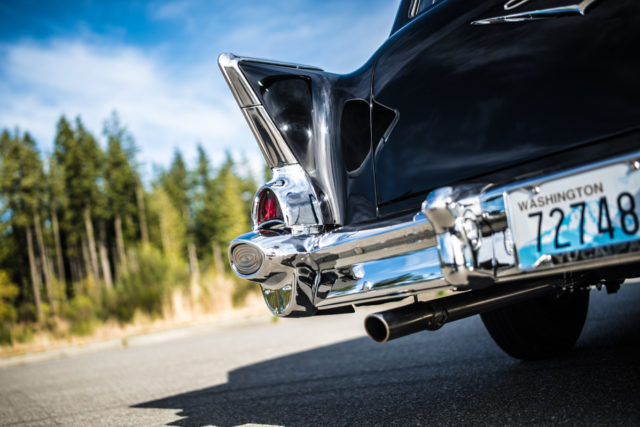 [10]
[10]
The car had no rust, but the whole front clip was gone. Originally, someone was making it into a racecar, and they had the front end setup to tilt forward, but it was a mess. “I had to get everything from the firewall forward,” Joe said. “I used all old sheetmetal that I found at swap-meets. It’s all about the hunt.”
“The biggest feature for me was that it had all the garnish moldings on the inside. They are all sedan delivery only, so that was a big deal,” Joe continued. “The car originally came out of California, where it was in barn for 38-years. I ended up doing a lot more than I intended to, but you always do with stuff like this. It turned into a frame-off project pretty quick.”
Even with a car that’s been parked in a barn for as long as this one, there was a lot of work to be done. It’s amazing how quickly a simple restoration project can turn into a complete, frame-off rebuild. While it makes for a lot more work and a more expensive build, the end results are usually worth it. In the case of Joe’s 1957 wagon, the results are spectacular, and even from underneath it looks gorgeous.
We love the look of a clean undercarriage.
Staying Behind The Line
Sticking to 1965 specs might sound like a daunting task, but Joe likes to keep things simple, and he likes to follow a theme. That restriction helped define the project and make a truly unique build. We first caught onto this project about a year ago, when Joe was about mid-way through the build. We knew it was going to be something special, so we featured it as a Reader’s Hardcore Project. [16]
Here is what the car looked like last year when we stopped by for a look. It‘s come a long way since then.
“Everything has been kept as the standard sedan delivery would have been,” Joe explained. “Except for the engine and transmission, the only upgrade I made were the bucket seats. The new seats are from Procar [21], but it originally would have had buckets. These were the cheapest cars that Chevrolet made, even the passenger seat was an option, and they only came with one sun visor.”
The simple, yet modernized interior was a great choice by Joe. The new seats and center console don‘t take away from the classic style and theme Joe was going for, but they do add a heightened level of comfort for the driver and passenger.
The interior was reproduced to original specs by Ciadella [25] out of Tempe, Arizona. Joe also went with all new, factory-style gauges from Danchuk [26].
“I wasn’t planning on doing that, but one of the gauges didn’t work, so I ordered a new one and it made the rest of them look like shit,” Joe said. “After that I had to order all new ones.” He has nothing but positive things to say about both Danchuk and Ciadella, and they were instrumental in building this car.
The interior turned out just as well done as the exterior, and the parts from Ciadella is top notch quality.
“I counted it up one time,” Joe said, “And there are parts from 15 different cars on this one. The bumpers are all rechromed, the stainless around the windshield is original, and the chrome fins are original. Everything else is Danchuk.”
The Build
Just for a little more explanation of what is exactly a sedan delivery, it’s basically a 150 station wagon without provisions for a back seat, and every possible delete. There’s no radio, no clock, a standard heater, no power steering, and really, no anything that wasn’t essential for driving. They didn’t even have carpet, just vinyl covers over the floor.
It just looks good from every angle.
Part of the attraction to the sedan delivery is that it’s a really simple car. There are no bells, no whistles, and less chrome than almost anything else of the era. They offer a totally different look from any other Tri-Five model in that they are a wagon with two doors, like the Nomad, but offer a stripped down trim style. Except for special order circumstances, they also come with panels instead of windows, and in Joe’s case, where he painted the car black, it adds a whole new dimension to the look of the car.
The painted black steel where the windows would be on a regular wagon help further the sleek look of this car. This style also really lends itself to the retro-hot-rod look Joe was going for.
The biggest challenge for Joe was finding someone to paint the car. “I couldn’t even get anyone to call me back,” Joe explained. “I wanted to paint it in lacquer, but nobody would do it.”
Finally, Joe found a painter named Keith Russel, and he did an excellent job with the car. Keith used a single-stage urethane paint, so it doesn’t have a clear coat. “I have nothing, but good things to say about Keith,” Joe said, “He had it done on budget, and turnaround time was only three months. He was just a pleasure to work with.”
Joe did most of the work on the car, including all of the major bodywork before taking it to Keith. He even did all of the mechanical work and put it all together. The engine is the 327 cubic-inch small-block V8 that originally came in his Impala [39] that we featured last year. He used a four-speed manual transmission and the stock rearend to complete the build.
The 327 cubic-inch engine was a great choice for this classic build. His use of the generator was also a good way to really bring it home for his theme and add a bit of flair to the space under the hood. How many recently restored Tri-Fives still have a generator for electrical power? Not many.
Finishing Touches
Part of keeping things classic meant making a few changes that would have been done back in the day. One of these changes is a subtle custom touch on the rear wheels. Someone intimately familiar with classic Chevys might have noticed that something back there, it just a little off.
The wheels are off of an older Buick, and had the centers knocked out so Chevy centers could be welded in backwards. “This moved the tires out farther, and they’re also a little bit wider rims,” Joe explained. “A hundred guys can look at it and just one will notice.” That’s one of those things that they did back in the day that nobody really does anymore.
Can you see anything different about the wheels just from looking at them?
For authenticity’s sake, Joe also used bias-ply tires for the perfect look. He was worried about that at first since he drives his cars a lot, but he’s been really happy with the ride so far. He also kept the generator instead of going to an alternator, and he has left the original braking system unmodified.
You really can't replicate the look of the original style bias-ply tires.
I haven’t even taken it cross-country yet – Joe
Check out the gallery below for more pictures from our photoshoot. It’s really worth an extra look, this car is beautiful.
